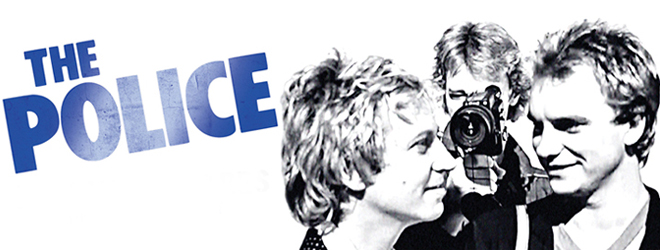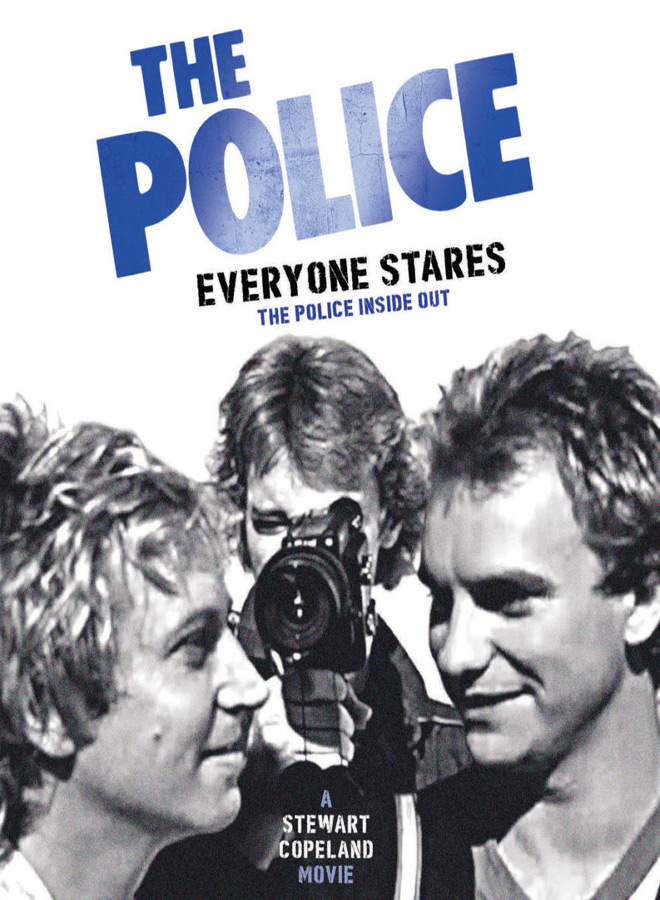
Available on Blu-ray, DVD, and digital through Eagle Vision on Friday, May 31st, Everyone Stares uses footage that Copeland shot nearly four decades ago on his Super 8 camera. Longtime fans of the band are treated to a unique, intimate look at one of the greatest three-piece bands of all time, thanks to Copeland’s video that can’t be found anywhere else. On the audio side of things, the film is scored using rare live performances and “derangements” of the band’s biggest hits. That said, even though it’s only 74 minutes long, it is filled with sights and sounds that even the most diehard fans have probably never encountered.
The film starts with a Gonzo intro, placing the audience in the shoes of the fast-paced, overwhelming, frantic, and sometimes claustrophobic world of Rock-stardom. It sets the mood for the ensuing tale, which begins with narrator Copeland lamenting how the band originally played for a mere 30 pounds sterling (approximately $40 U.S.) a night. Though this is familiar territory for any band that eventually achieves world renown, it’s still nice to hear just how far they’ve come, and providing a real dollar amount just drives that point home even further.
From there, the audience joins The Police on their journey from newcomers cutting their teeth in the U.K. and America to their post-world conquest tours in Egypt and the tropics. Along the way, we see Bassist and Hollywood icon Sting act like a bit of a dick, Guitarist Andy Summer behave like a lovable goofball, and Copeland himself serve as the glue that held the band together, including his recruitment of his brother and brother-in-law to serve as the band’s agent and manager, respectively.
The whole tale is told in linear fashion, which makes for some easy viewing and allows the audience to really absorb everything that’s happening. We jump from footage of hotel rooms to the band signing posters and women’s chests to photo shoots and press conferences. It’s all a whirlwind, and Copeland’s footage makes the audience feel like the unseen fourth member. Unlike other similar Documentaries, there are no talking heads or modern shots to splice up the action; what Copeland and co. saw when they were rocketing toward Rock-and-Roll immortality is exactly what the audience sees.
The true gems, though, are the scenes of rare live performances interspersed throughout. There are about a dozen of them, and each offers a new take on familiar classics. Some are woven into the narrative and others are transitional, but all of them showcase the band’s pure talent and unrefined energy. While studio cuts offer cleaner versions of these tunes, this footage makes it clear what made the band so popular to live audiences during their decade-long run. Sting isn’t so much a pretty boy here as he is an artist and showman, and Copeland and Summer match (if not surpass) that energy themselves.
The story is peppered with amusing anecdotes from Copeland, who offers articulate and creative insights that only someone in the band could. A standout is the behind-the-scenes story about the sheep that were used for the filming of “De Do Do Do, De Da Da Da.” On the flipside, Copeland’s footage of swarming fans preventing the band’s limo from leaving certain venues balances the more humorous tales with a reminder that the life of a musician isn’t always smiles, no matter how the promotional materials make it look. Most audience members may be familiar with the idea of cost of fame; Copeland’s admission of craving a normal life of grocery shopping and driving his own car makes that price painfully apparent. “They want to give us gifts,” Copeland says of his fans. “All they want in return is to take from us our essence.” It isn’t long after this revelation that The Police disband, each member pursuing a completely different life outside of their former fame.
Before that happens, though, the band puts on a historic show. Though recent music films have also ended this way, it’s worth noting that this film was put together back in 2006, prior to the current wave of biopics. Similar to their ushering in of Punk music to the masses, The Police were setting trends with their Documentaries, too.
Thank goodness Copeland had the foresight to capture their career on camera. On top of that, fans are fortunate that he ended up with the film-making skills that helped bring this story to life. He was an excellent cameraman and most scenes are gorgeous, even for footage from the ’70s. Additionally, his on-screen personality, any time he makes an appearance, there is a certain charm to him as a narrator, musician, and behind the scenes, as an editor.
Included in this release is a commentary track and nearly 20 minutes of additional footage, which were not included in this review. If the quality of the footage is anywhere near what made it into the feature film, then fans are in for an even bigger treat. While the story could have perhaps lingered a little longer on certain topics, the simple fact that there is so much footage and recordings that haven’t been widely available before now more than makes up for it.
In truth, this film was made purely for the fans and stays as authentic and truthful as any Documentary could hope to be. For these reasons and more, Cryptic Rock gives The Police: Everyone Stares 4.5 out of 5 stars.






No comment